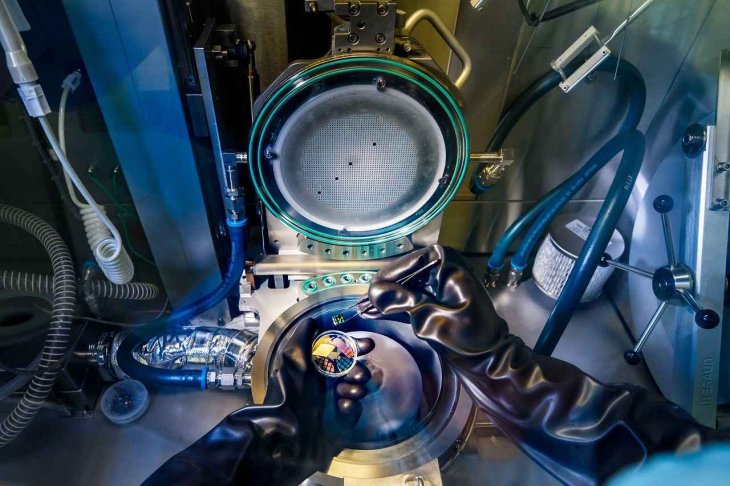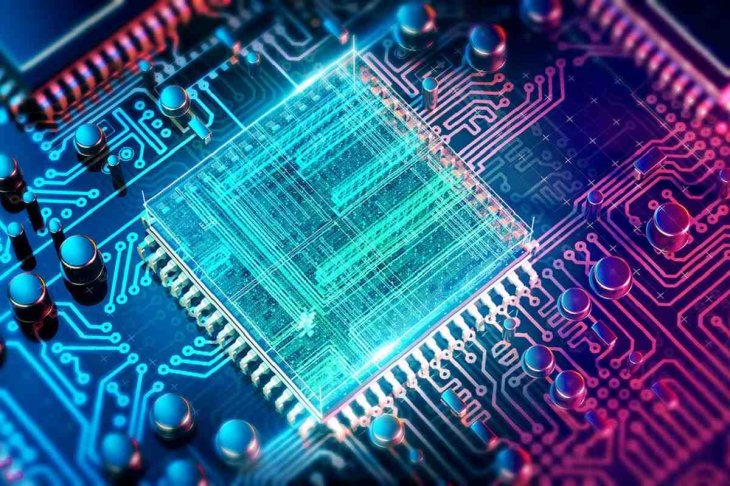Your Computer Will Likely Transmit Data At Light Speed Thanks To This Innovation: Glowing Silicon
Dhir Acharya - Apr 15, 2020

After 50 years of work to make computer chips work faster, researchers have finally figured out a way to improve data transmitting using glowing silicon.
- Intel Announced 11th-Gen Rocket Lake Processors, Rivaling AMD Ryzen Chips
- The India Institute of Technology In Madras Fabricated Its First Microprocessor Named Shakti
After half a century of continual invention and innovation to make computer chips work faster, it seems that we can rely on Moore’s Law again. Specifically, researchers have come up with a way of making silicon glow, Wired reported. This will change how we improve the processing speed of computer chips, using photons that emit light for transmitting data instead of having to double the number of transistors on a chip every two years.
This is a huge milestone in the computer chip area. Over the years, chip makers like Intel and AMD have been stacking more threads and cores into their chips while reducing the gap between transistors to just 7nm. However, the drawbacks of this approach include overheating as well as electron traffic jams, which slows down or halts the flow of communication.

This is probably why Intel has been taking more time than expected to work on its 10nm technology. It’s important to get the right manufacturing process to prevent such issues from happening due to packing transistors tightly.
However, Wired reported that a group of European researchers grew silicon alloy nanowires that can emit light, making it possible to make silicon glow. But according to the lead author of the study, physicist Erik Bakkers, using this technique, his lab is building a mall-sized silicon laser that can be built into a computer chip. As a result, we may have computer chips that generate less heat and transfer data faster while consuming less energy.

Essentially, Bakkers have been working with his team for the past decade to figure out a way of changing silicon’s structural shape to allow its photons to move around more freely. And they have finally succeeded. With photon-based transistors, computer chips will be able to transmit data faster, across several channels at a time while electrons move data across only one channel each time.
However, computer chips in the future won’t necessarily be optical. It makes sense to use electrons for transmitting data in a component because it needs to travel over a short distance only. For longer ones, however, between two components for example, he says that photons would work better. This will help not only home PCs but also self-driving cars, data centers, etc.
>>> This Company Builds Computer Chips Using Human's Brain Neurons
Featured Stories

Features - Jul 01, 2025
What Are The Fastest Passenger Vehicles Ever Created?

Features - Jun 25, 2025
Japan Hydrogen Breakthrough: Scientists Crack the Clean Energy Code with...

ICT News - Jun 25, 2025
AI Intimidation Tactics: CEOs Turn Flawed Technology Into Employee Fear Machine

Review - Jun 25, 2025
Windows 11 Problems: Is Microsoft's "Best" OS Actually Getting Worse?

Features - Jun 22, 2025
Telegram Founder Pavel Durov Plans to Split $14 Billion Fortune Among 106 Children

ICT News - Jun 22, 2025
Neuralink Telepathy Chip Enables Quadriplegic Rob Greiner to Control Games with...

Features - Jun 21, 2025
This Over $100 Bottle Has Nothing But Fresh Air Inside

Features - Jun 18, 2025
Best Mobile VPN Apps for Gaming 2025: Complete Guide

Features - Jun 18, 2025
A Math Formula Tells Us How Long Everything Will Live

Features - Jun 16, 2025
Comments
Sort by Newest | Popular